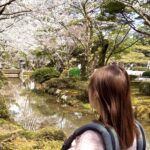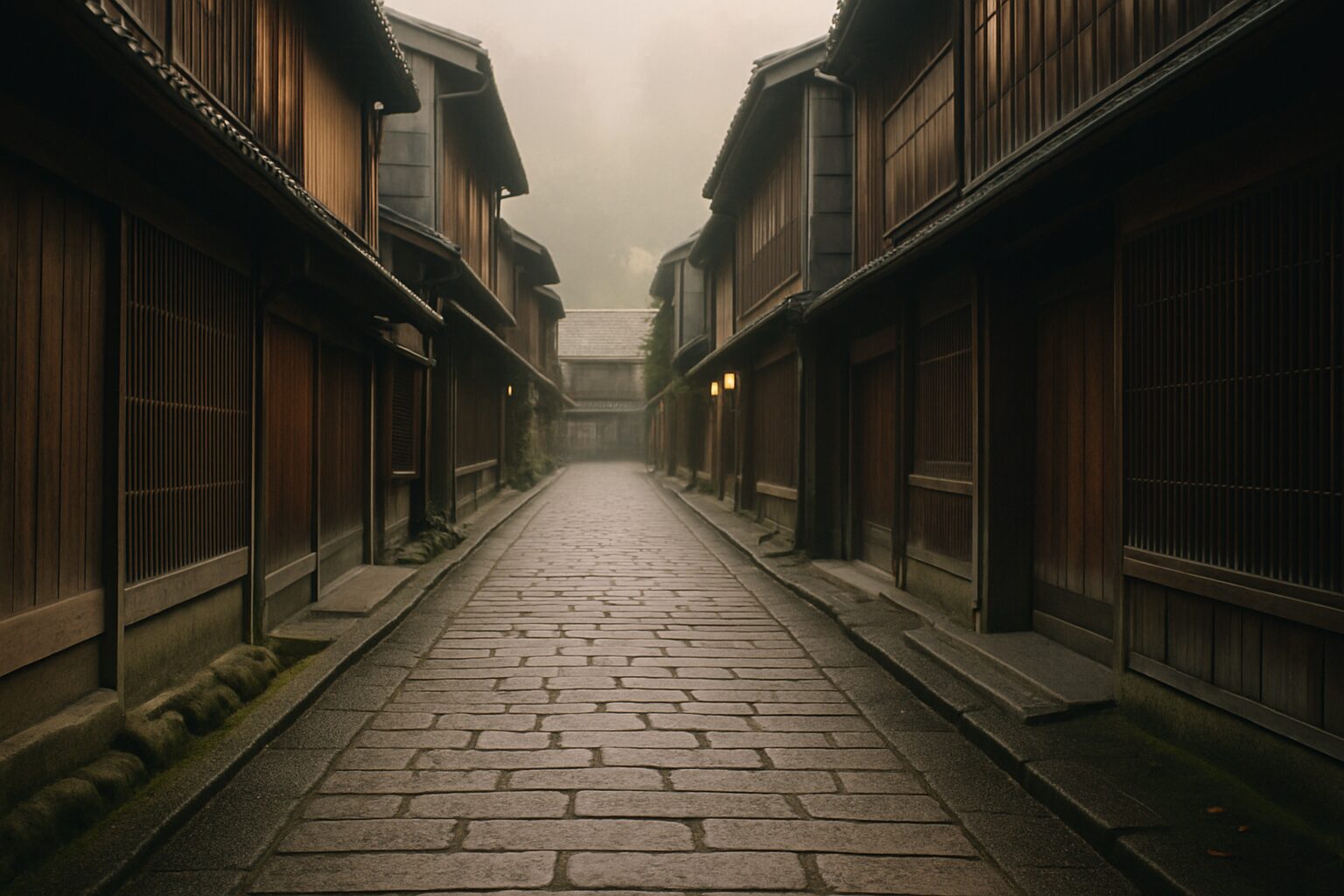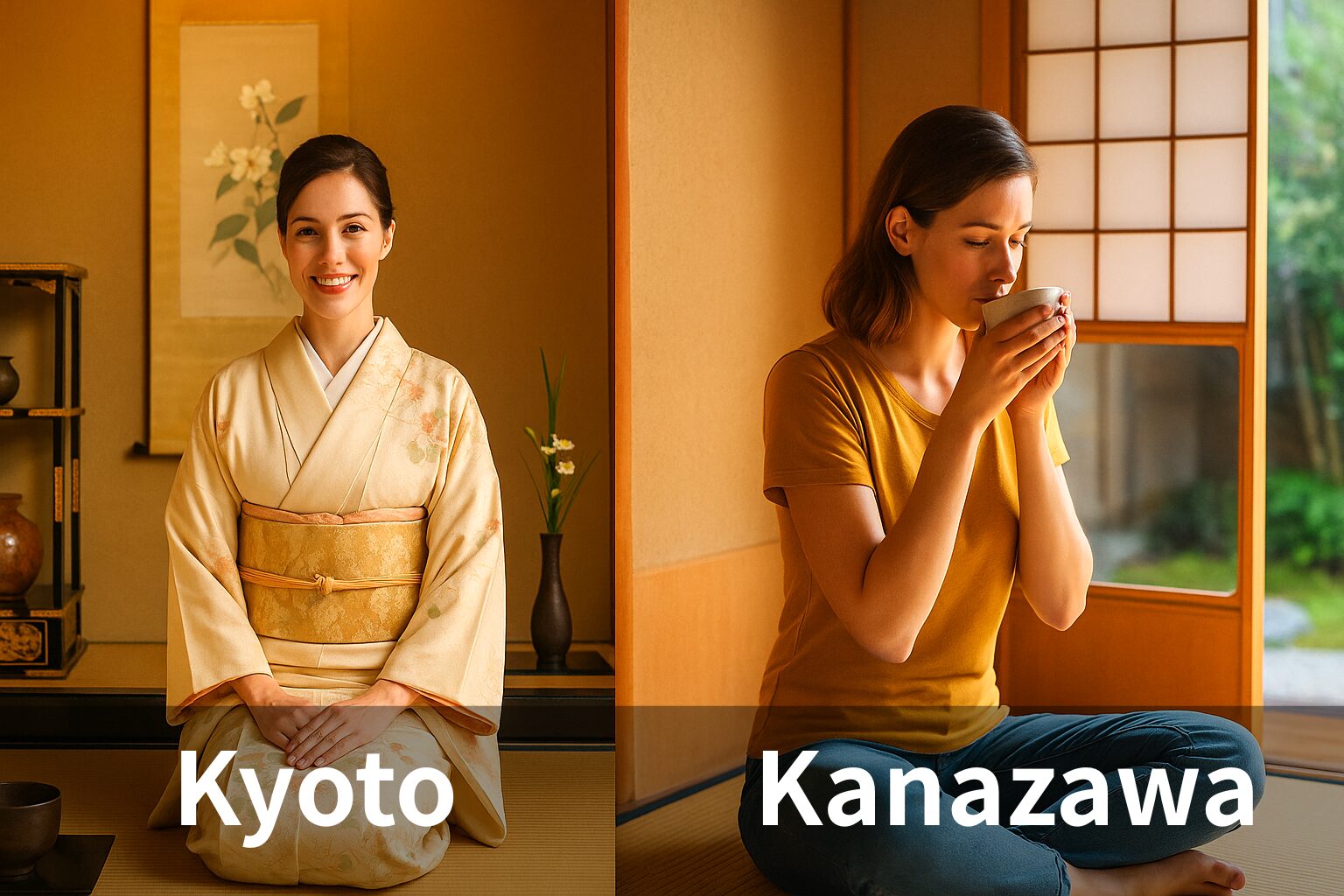The Tools and Steps of a Japanese Tea Ceremony: How to Prepare Matcha with Meaning
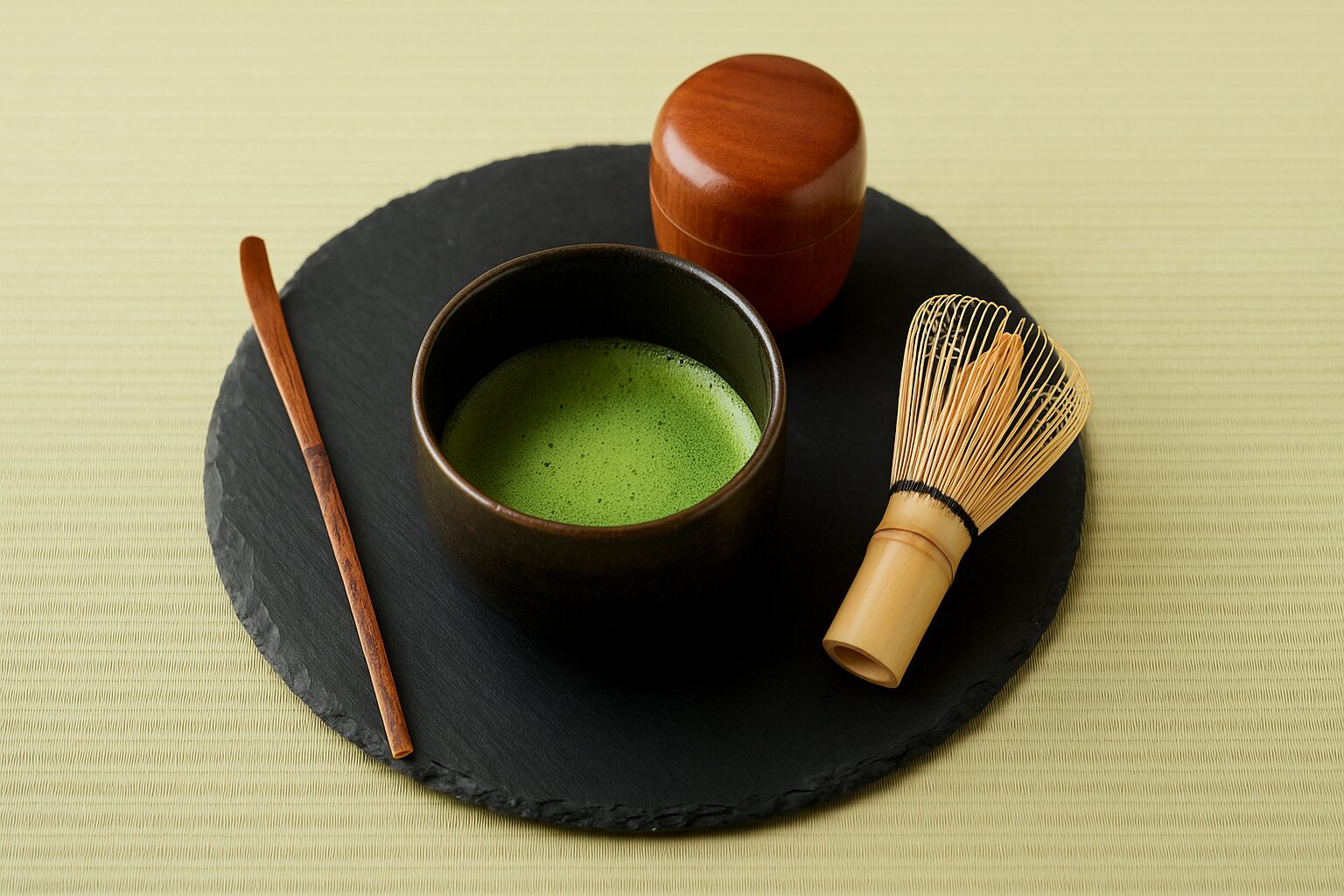
When learning how to make matcha, understanding not just how it’s done but also why each step is taken can completely transform how you see the Japanese tea ceremony.
In Japan, the tea ceremony is far more than just “making a cup of tea.” It’s a rich cultural practice that includes the meaning behind each movement, respect for the tools, and a way to center your mind.
In this article, based on an actual tea ceremony experience in Kanazawa, we’ll guide you through the basics of how to prepare matcha, the tools involved, and the significance behind each action—all in a way that’s easy for beginners to understand.
- Learning to Make Matcha Changes the Way You See the Tea Ceremony
- Key Tools of the Tea Ceremony—and the Meaning Behind Them
- The Basic Steps of Preparing Matcha: Movement Within Stillness
- Why This Order? Why These Movements? The Intention Behind Every Gesture
- Understanding the Process Makes the Tea Ceremony Even More Meaningful
- Bonus: Want to Try It at Home? A Simple DIY Matcha Guide
Learning to Make Matcha Changes the Way You See the Tea Ceremony
The Japanese tea ceremony is not just a pleasant break in the day.
Every step in preparing a single bowl of matcha is infused with thoughtfulness, respect, and calm, and each movement has meaning.
At first, the process may seem a little daunting. But once you understand the steps, you’ll likely be drawn in by its subtle, intricate beauty.
Key Tools of the Tea Ceremony—and the Meaning Behind Them
Chasen (Bamboo Whisk): Why the “One-Stroke” Motion Matters
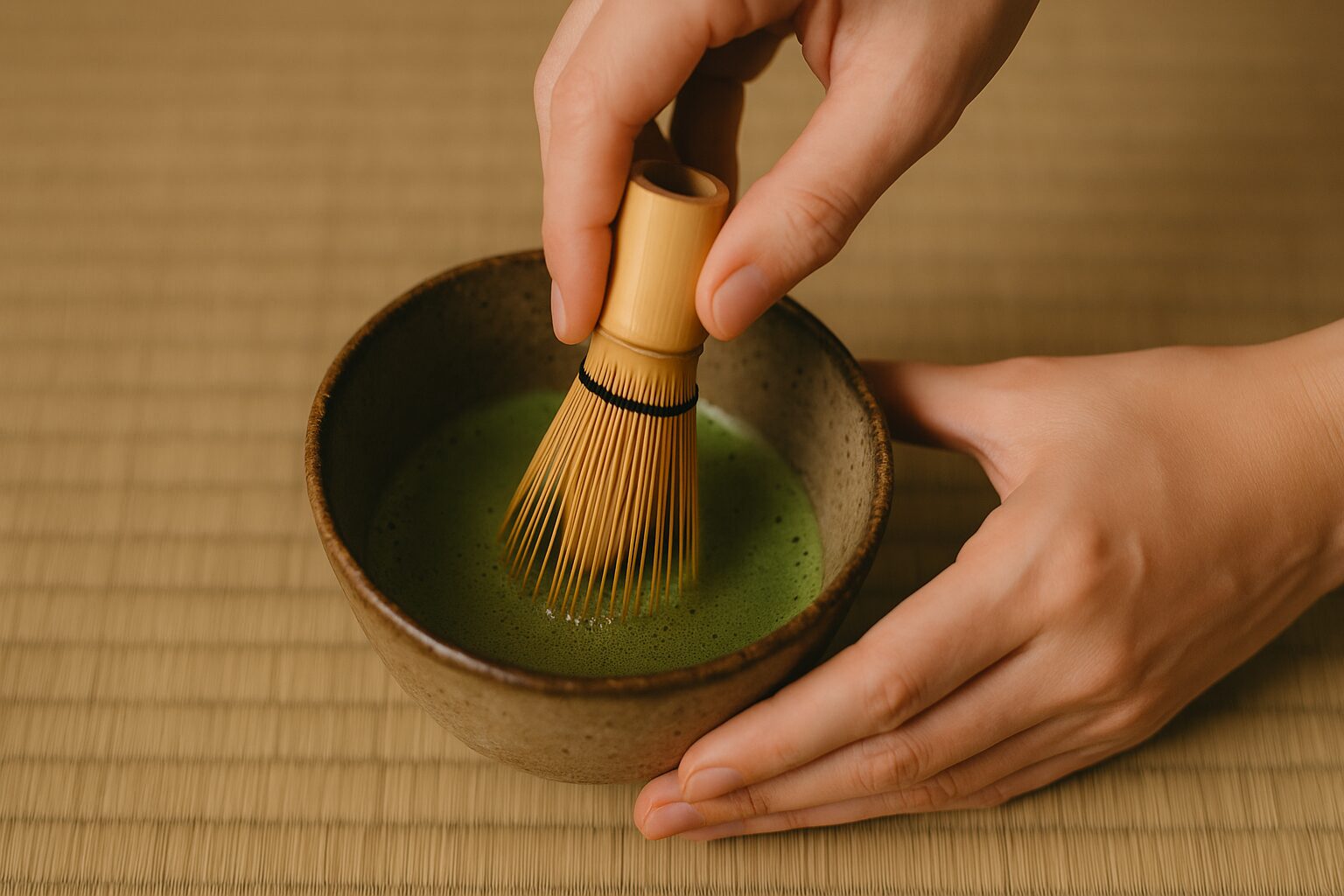
The chasen is a bamboo whisk used to mix matcha powder and hot water.
Many people assume it’s stirred in circles, but in fact, the basic motion is to move your wrist as if writing the Japanese character for “one” (一)—a straight up-and-down stroke.
This motion holds deeper meaning:
- Reason 1: To create a fine, smooth froth
The vertical motion creates delicate foam without aggressive stirring. This softens the taste and makes the matcha smoother and less bitter. - Reason 2: A graceful gesture for visual beauty
Some tea schools add a final spiral motion to finish, centering and shaping the foam beautifully.
This quiet elegance reflects the aesthetics of the tea ceremony.
When I tried it myself, I was surprised—“Will it really froth like this?”—but sure enough, a gentle foam appeared, creating a soft and creamy texture.
It’s a beautiful contradiction: quiet, gentle movement creating a profound change in taste. That’s the unique charm of the chasen.
Fukusa: A Cloth That Embodies Respect and Purification
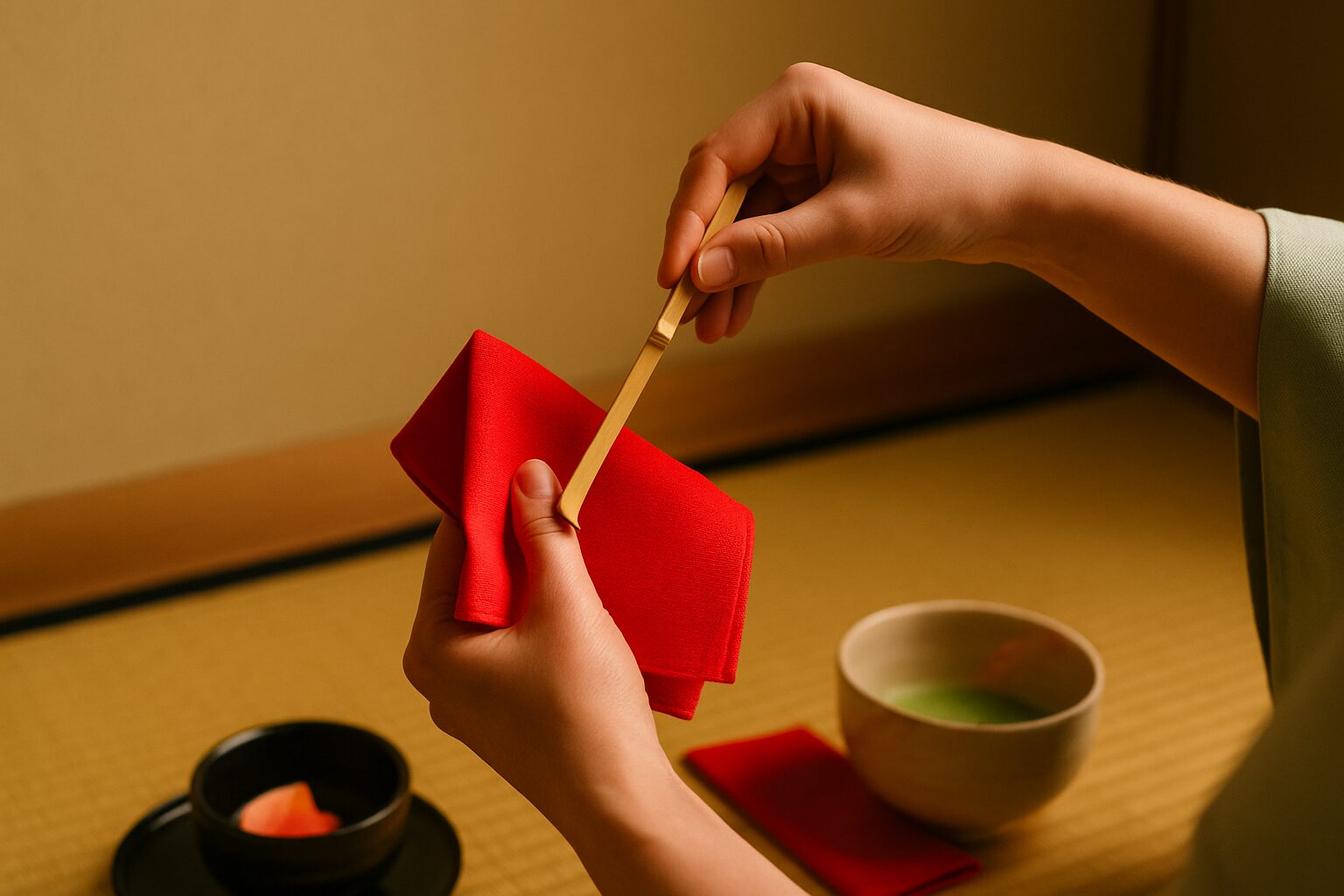
The fukusa is a special cloth used to purify utensils and guide the flow of movements. But more than that, it reflects the spirit of preparation and respect.
The Meaning Behind Cleaning the Tea Tools
During the tea ceremony, items like the natsume (tea container) or chashaku (tea scoop) are carefully wiped using the fukusa.
This action expresses a quiet wish: “I want to treat these tools with care, and prepare a bowl of tea that feels good for the guest.”
The way it’s handled is meticulous, almost like origami—folded precisely, with attention to avoid touching the same spot twice. This delicate care reflects the tea ceremony’s spirit of mindfulness.
A Practical Tool, Not Just Ritual
The fukusa also serves a practical role:
It protects the hand when handling the hot lid of the kettle. It’s not just for ritual—it has everyday usefulness too.
Awareness Hidden in Silent Movement
Even in the act of folding a simple cloth, there’s an intention to purify the space and center the moment. This kind of conscious movement reflects Zen philosophy.
There’s no wasted motion, and even watching someone fold a fukusa brings a quiet sense of calm.
Other Tools, Each with Their Own Role and Aesthetic
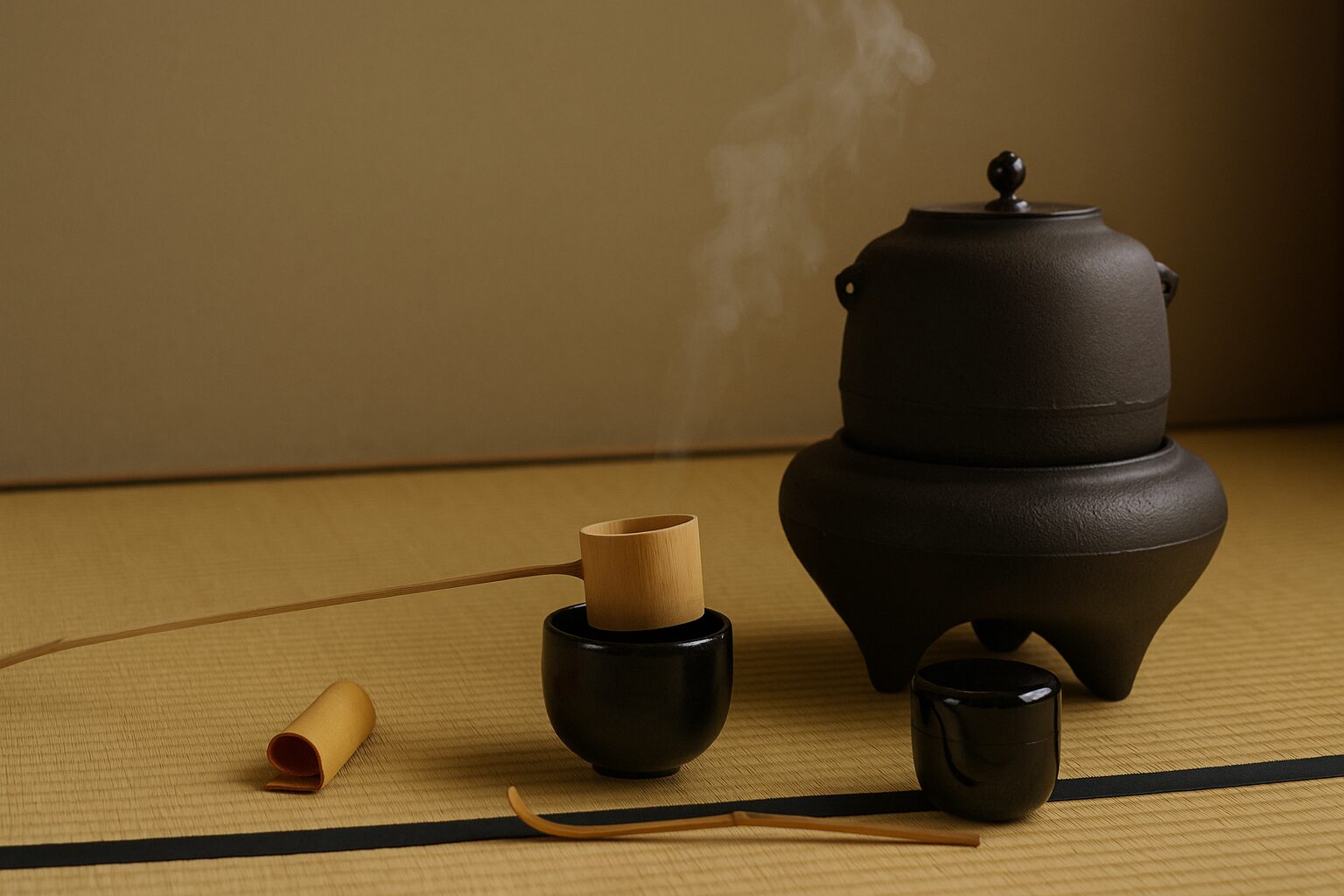
- Hishaku (Ladle): A bamboo scoop used to draw hot water from the kettle or water container. Even the motion of scooping is performed with beauty in mind.
- Kama (Iron Kettle): Used to boil water, the kama is a central presence in the tea room. The sound of bubbling water and rising steam add to the atmosphere of stillness.
- Natsume (Tea Caddy): A small lacquered container for holding matcha powder. Its soft, rounded form adds to the refined elegance of the ceremony.
- Chashaku (Tea Scoop): A slender bamboo scoop for transferring matcha. Its angle and handling carry subtle meanings, revealing a sensitivity to even the tiniest portion of tea.
Each of these tools plays a vital role in creating a space of quiet beauty and harmony.
In the next section, we’ll walk you through the actual steps of making matcha.
The Basic Steps of Preparing Matcha: Movement Within Stillness
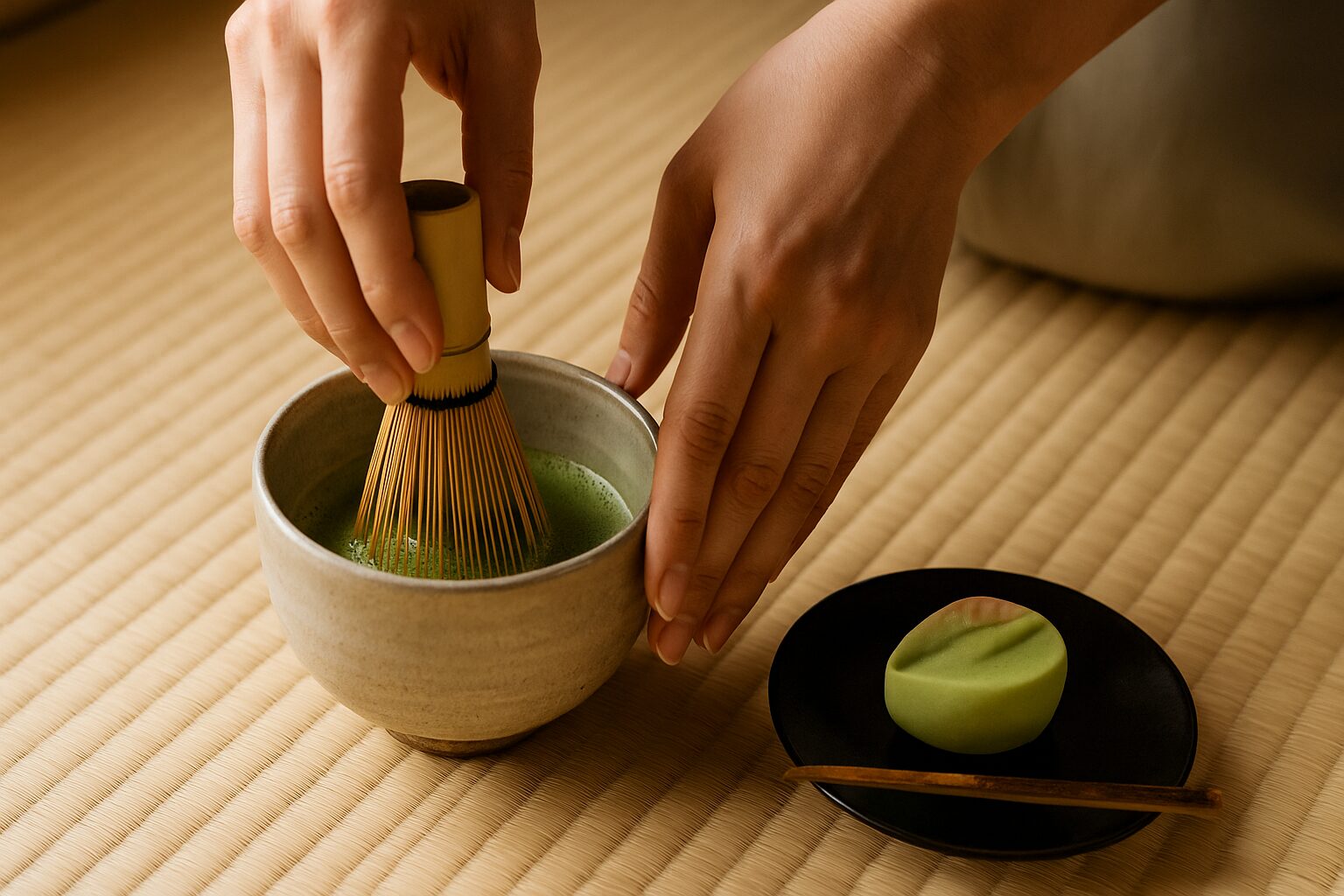
The series of movements in a tea ceremony feels slow and intentional—almost like time is stretching.
There’s no need to rush. In fact, savoring the quiet and the ritual itself is at the heart of tea ceremony.
Here’s a simplified version of how beginners typically prepare usucha (thin matcha) during a hands-on tea ceremony.
Set out the natsume (tea container), chashaku (scoop), chawan (bowl), chasen (whisk), and other utensils—placing them with a sense of greeting and intention.
Pour hot water into the bowl with the hishaku, whisk gently with the chasen to warm it, then discard the water and wipe the bowl dry.
Use the chashaku to scoop two portions of matcha into the bowl.
Pour in about 60–70ml of water at around 70–80°C using the hishaku.
Whisk with the chasen using a wrist motion like drawing the character “一” (one) up and down.
When a fine foam forms and the surface is smooth, it’s ready.
What stands out most during this process is the quiet soundscape.
The clink of tools, the gentle pour of water, the swish of the whisk—everything invites you to focus on the present moment.
Why This Order? Why These Movements? The Intention Behind Every Gesture
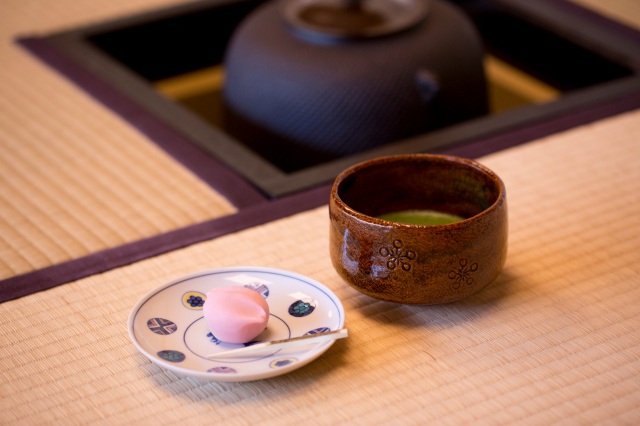
In tea ceremony, many movements seem indirect or even unnecessary.
But in fact, each action is filled with intention and meaning.

At first I didn’t understand why we did that, but then…
Movements Made Beautiful for the Sake of the Guest
For example, turning the tea bowl to avoid drinking from the front shows respect for both the host and the bowl itself.
Wiping the tools with the fukusa isn’t just cleaning—it’s a way of preparing something beautiful and respectful for another person.
In Japanese tea etiquette, the front of a tea bowl is considered its most beautiful side—often featuring a unique glaze or design.
Guests avoid drinking from this side to show respect and avoid soiling the focal point of the bowl.
Like a Form of Zen Practice
Watching or performing the ritual, you’ll notice how it demands focus and grace.
Even if a gesture seems puzzling at first, when explained by a teacher, you’ll be surprised by the purpose behind it.
There’s a moment of realization: the “unnecessary” motions were actually what helped center the heart.
Understanding the Process Makes the Tea Ceremony Even More Meaningful
The tea ceremony is not just about making a cup of matcha.
It’s a series of intentional, cultural movements that express care for others, mindfulness, and respect for space.
When you learn the purpose behind each tool and each movement,
the time spent in the tea room becomes more than an experience—it becomes a quiet moment of healing and deep cultural insight.
And while it may feel like stepping into a world far from everyday life,
it also offers something you can carry back with you into your daily routine.
If you’ve been feeling unsure about trying a tea ceremony because you “don’t know the proper manners,” don’t worry.
By simply reviewing what we’ve shared here, you’ll feel much more confident.
Why not take that next step and experience it for yourself?
For those interested, we also have a guide on how to book a tea ceremony experience.
Bonus: Want to Try It at Home? A Simple DIY Matcha Guide
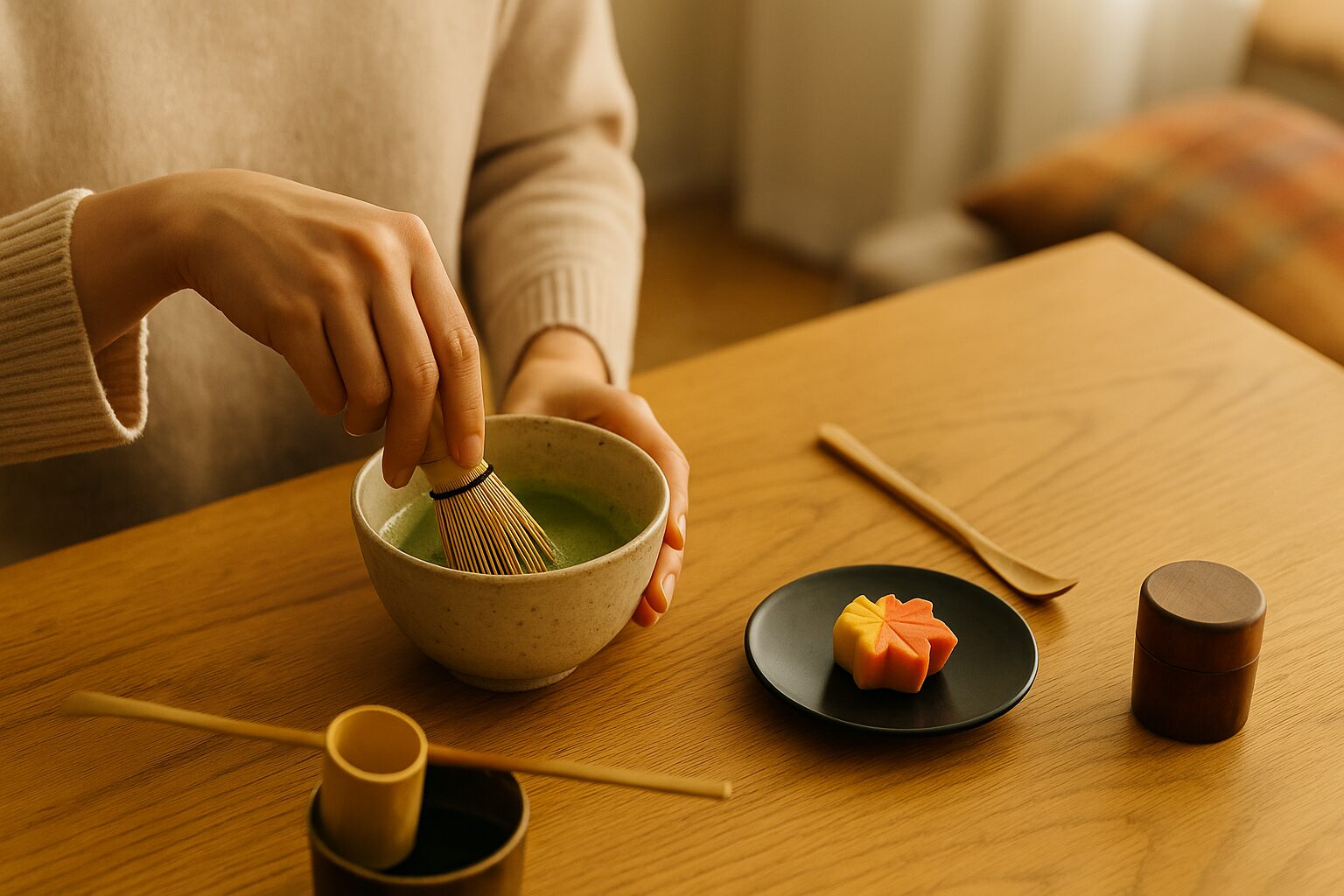
Even without a traditional tea room or all the formal tools,
you can still enjoy a simplified tea-making process at home.
Basic Tools You’ll Need
- A tea bowl (or a wide-mouthed cup)
- A chasen (bamboo whisk – available online or in Kanazawa souvenir shops)
- Matcha powder
- Hot water (from a kettle or pot)
Easy Home Matcha Steps
- Put 1–2g of matcha (about 1 teaspoon) into your bowl
- Add 60–70ml of hot water (70–80°C)
- Use the chasen to whisk vigorously in an “M” or “W” shape (or circular motion if you’re new)
- When a soft foam appears on the surface, it’s ready!
Even adding quiet music or a sweet treat can bring a touch of luxury to your everyday life,
creating a “tea moment” that nourishes both body and soul.
